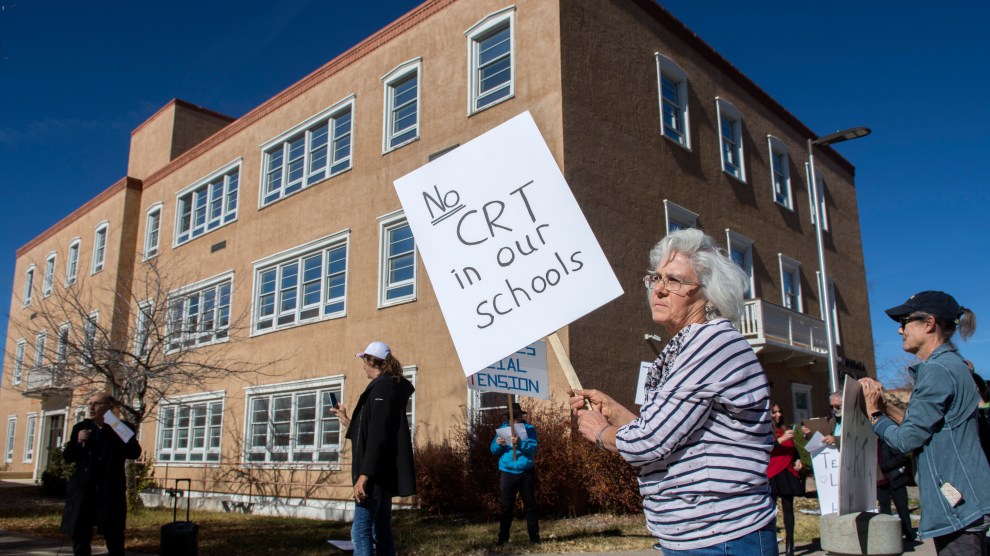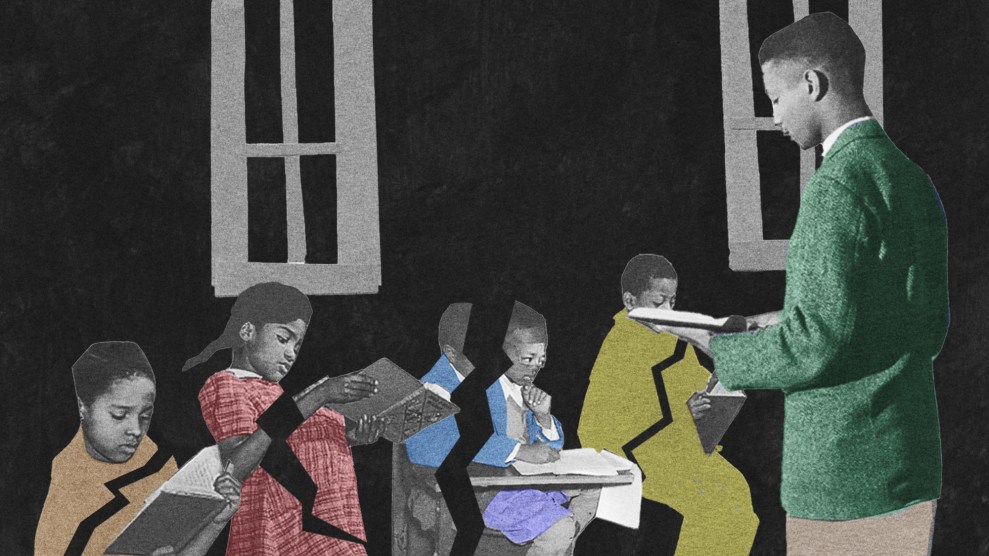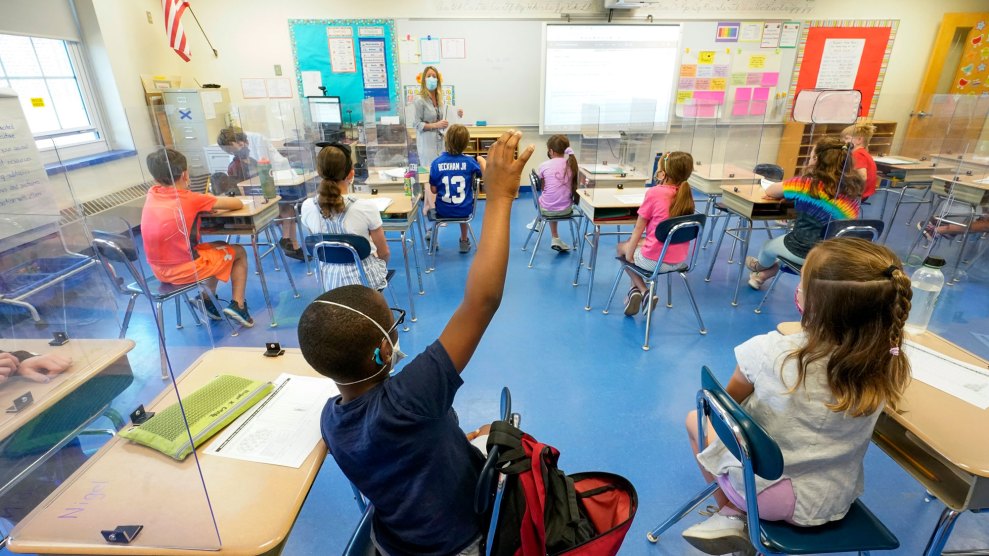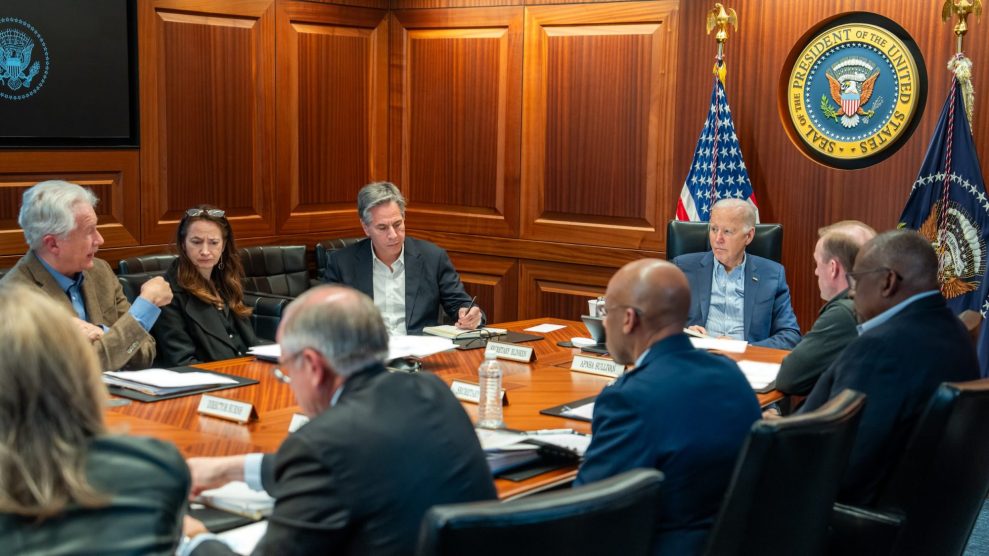
An anti-critical race theory protester in New MexicoEddie Moore/Albuquerque Journal/Zuma
What if there is nothing to panic about? This week, three conservative school board members in a rural Colorado district threatened to resign because of critical race theory. Not because they fear it. But, instead, because they’re sick of the fear-mongering about it.
The three board members in Elizabeth, Colorado (population: 1,675), say that critical race theory is not taught in schools, but that community members have brought up the issue relentlessly. At a February 13 school board meeting, Elizabeth High School principal Bret McClendon addressed Rhonda Olsen and Heather Booth, the two school board members who have launched a crusade against CRT, telling them to “stop chasing ghosts.”
NEW: Colorado Republicans' effort to seize school boards has taken an odd twist in Elizabeth, where conservatives are turning on each other with accusations of supporting CRT and LGBTQ rights. 3 of 5 school board members just resigned. @SteveStaeger reports for Next. #copolitics pic.twitter.com/cTilCNiYHG
— Kyle Clark (@KyleClark) March 10, 2023
“We are not teaching critical race theory at Elizabeth High School,” McClendon said, according to the local Elbert County News. “Nor are we indoctrinating kids about non-traditional lifestyles. We are teaching kids skills to be successful when they leave us. But the work we are doing is being hampered by claims of CRT and LGBTQ agendas in our schools.”
Earlier this year, the conservative, Christian principal of one of the town’s elementary schools announced her resignation, effective June 30, amid what she characterizes as a harassment campaign from Olsen and Booth.
School board president Cary Karcher has also had enough. “I am a conservative,” he said. “I’m upset about [CRT] too. I don’t want it to come into the district, but I don’t want this conversation to happen week after week after week either.”
This week, the district confirmed that Karcher was one of the three school board members who planned to resign, effective March 14. If the three members move forward with their resignations, only Olsen and Booth will remain on the board, leaving the school district without a quorum. Booth is also currently facing a recall campaign. The district’s communications director, Jason Hackett, called the situation “unprecedented.”
















